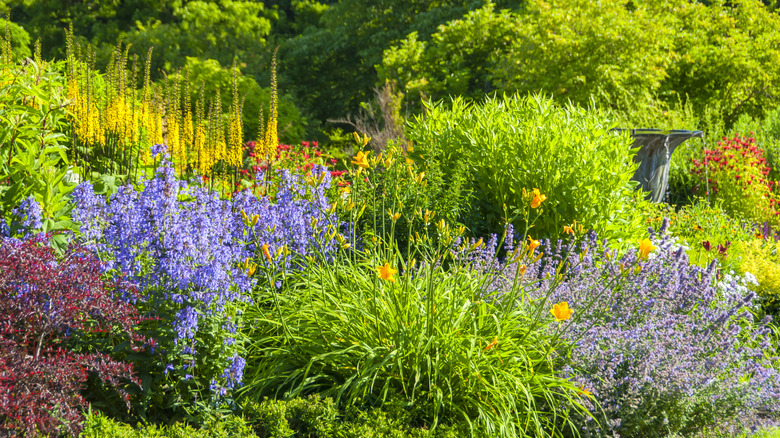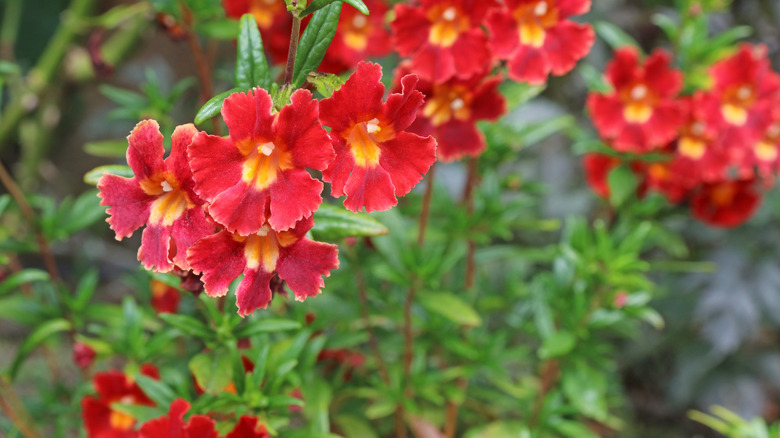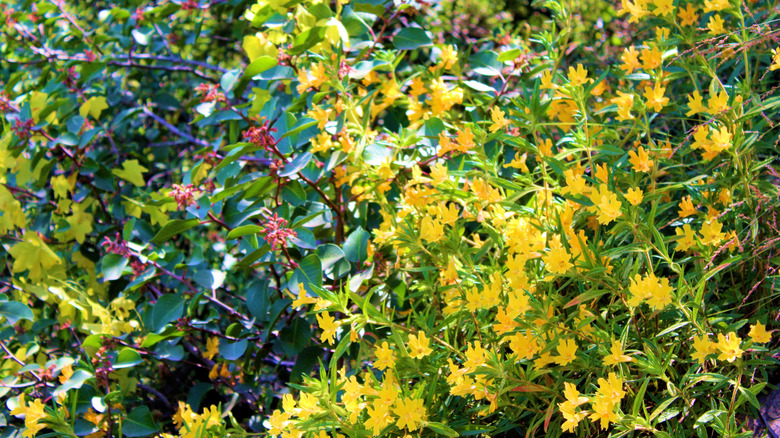The Shrub With Show-Stopping Flowers That Attracts Pollinators To Your Yard & Keeps Deer Away
Are you looking for a plant that has beautiful flowers, supports the local ecosystem, and helps keep deer away? Meet Mimulus (Diplacus) aurantiacus, or the bush monkey flower. This vibrant shrub is a dependable garden plant, showcasing a burst of sunshine-yellow, fiery orange, or even deep red blooms (said to look like a monkey's face) that brighten any outdoor space. Beyond its beautiful appearance, the bush monkey flower is a magnet for hummingbirds, bees, and butterflies, turning your garden into a buzzing, fluttering show of local pollinators.
For gardeners who are plagued by deer nibbling away at their plants, this resilient native plant deters deer, since they find its slightly sticky leaves (the reason why it's sometimes called sticky monkey flower) unappealing. This makes it a useful addition to other great ways to keep deer out of your yard. If you're looking for a plant to add to your garden that brings beauty, pollinators, and a bit of deer-proofing, the bush monkey flower might be your new best friend. It thrives in USDA hardiness zones 7 through 11, and is low-maintenance, which makes it an excellent choice for both experienced green thumbs and beginning gardeners.
Gardeners in drier climates or those looking to conserve water, will also appreciate the bush monkey flower's drought-tolerance once established. Native to western North America, it thrives in conditions with limited rainfall, making it a smart choice for sustainable gardening practices. This resilience means less time spent watering and more time enjoying the colorful blooms.
A pollinator paradise in your own backyard
Growing to a height of between 4 and 5 feet and about 5 feet wide, the bush monkey flower is an extremely versatile shrub that attracts pollinators. This makes it a must-have for anyone looking to keep these important visitors busy in their garden. As a bonus, its flowers are perfectly shaped to accommodate the long beaks of hummingbirds, which are also frequent visitors. The red and orange varieties are particularly effective at drawing in hummers, since these colors are highly visible to them. All types of bees, including bumblebees and native honey bees, are drawn to the bush monkey flower's pollen, and butterflies also find these flowers irresistible, adding another layer of movement to your garden. Some butterfly species, like the Common Buckeye, even use it as a host plant for their larvae.
Planting the bush monkey flower adds color and creates an important food source for beneficial insects and birds. This is especially crucial in urban or suburban areas, where natural habitats are often shrinking. Its extended blooming season, from spring through summer, offers a consistent food source when many other plants have finished flowering.
What makes the bush monkey flower deer-resistant?
The bush monkey flower's natural resistance to deer is a bonus for gardeners who often find these animals perusing their yards for tasty morsels. While no plant is entirely deer-proof, this woody shrub is consistently ranked as a less preferred option for deer, helping to protect other more vulnerable plants from becoming an afternoon snack. The shrub's leaves have a distinct flavor profile — herbal, salty, and bitter with hints of mint and sage — and it's believed that this is what makes them an unappealing choice. You'll find that the bush monkey flower works perfectly alongside other plants that keep away deer, so you can enjoy the pretty blooms all summer long.
It's important to note that while the bush monkey flower can spread in ideal conditions, it is not considered invasive or an aggressive grower outside of its native range. Even within its natural habitat, its spread contributes to local biodiversity. This combination of deer deterrence and manageable growth makes the bush monkey flower a practical and beautiful choice for a variety of garden settings.


